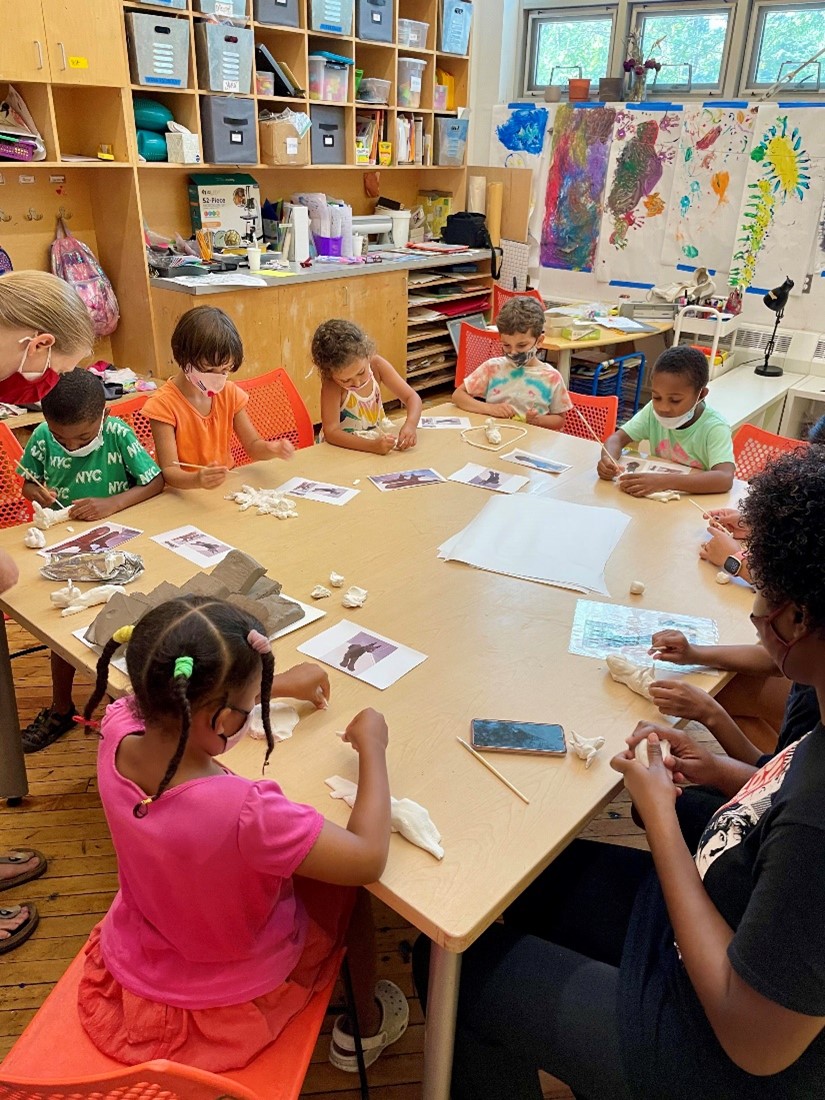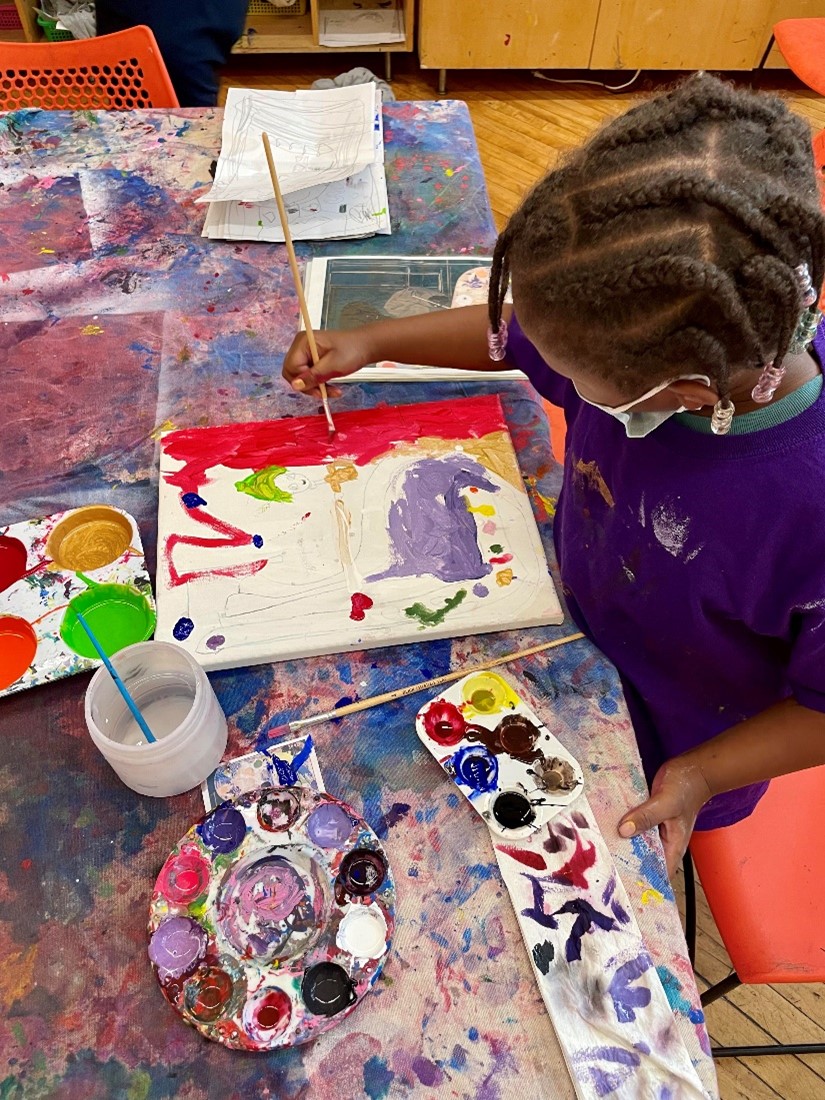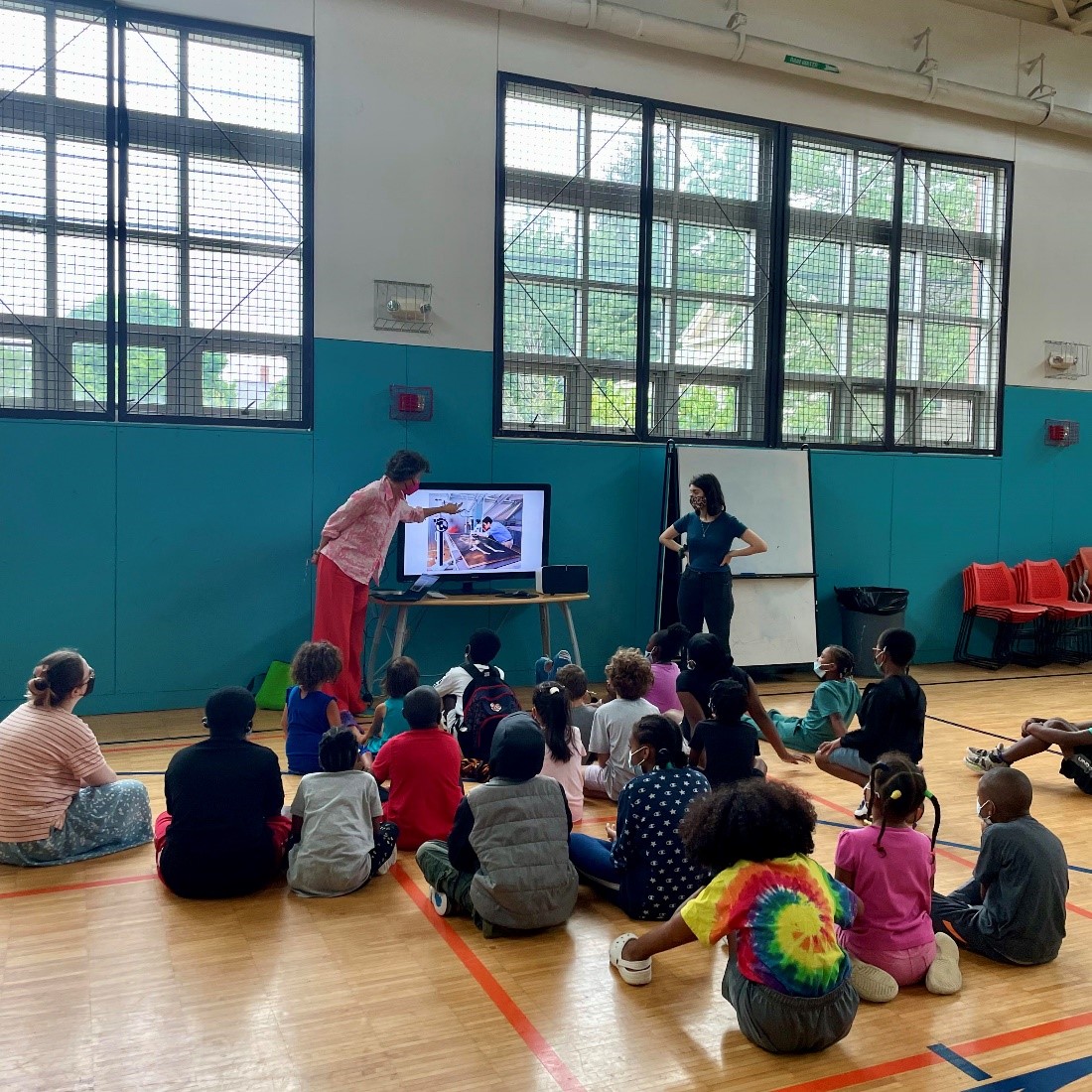Despite the clear obstacles posed by the pandemic, the Harvard Art Museums have continued efforts to engage with the Cambridge community.
The museums forged a partnership with Community Art Center, an established youth art center in a neighborhood called the Port. The partnership provided lessons about art and connection for both the Harvard Art Museums and Community Art Center.
Community Art Center has been in the Port for 85 years. The center provides a safe space for young individuals—from mostly low-income Black, Brown, and first- and second-generation families—to explore and express themselves creatively. It offers programs in dance, painting, theater, and more as well as childcare and human services. At the core of the center’s mission is the belief that mixing arts and service can uplift the community—and it certainly has, with alumni returning years later and contributing to the institution they were once part of.
Erin Muirhead McCarty and Francesca Bewer spoke with us about the partnership between the center and the museums, what they’ve learned so far, and what lies ahead for both institutions. McCarty is executive director at Community Art Center, and her background embodies the center’s mission around arts and service: her mother is a working artist and her father had been the director of social services for a town next to hers. Bewer is a research curator for conservation and technical studies programs, directs the Summer Institute for Technical Studies in Art, and heads the Materials Lab at the Harvard Art Museums. Engaging with art and serving the community have been vital to her as well. During her two decades at the museums, Bewer has been able to channel her passion for art, science, history, and culture through research and teaching, often bridging this gap in expertise for broader audiences at the museums.
Our conversation revealed much about the fruits of this collaboration as well as the path forward for the Harvard Art Museums in continuing to cultivate relationships with the Cambridge community.
Index: How did the collaboration between the Harvard Art Museums and the Community Art Center come about? What program was proposed?
Erin Muirhead McCarty: Before the partnership, I didn’t understand why we didn’t have a relationship with the Harvard Art Museums. Community Art Center has been here for 85 years. When the pandemic hit, I reached out to the museums, because we were in this period where everything around us was shutting down. We were still operating and had students and children, so we were trying to come up with creative and engaging activities for them to do. I was put in touch with Francesca.
Francesca Bewer: The closure of the museums during the pandemic offered a wonderful opportunity to consider ways in which we might reach out to local potential partners. A former colleague, who now works at the nearby Cambridge Community Foundation, suggested to both Erin and me that we get in touch with each other to collaborate. We first discussed some form of art sleuthing to fit with a theme that she and her team were developing for their summer camp. Among the ideas I mentioned was a program called “Fabulous Fakes and Poignant Poetry,” which was developed by our education department back in the early 2000s together with an artist-teacher from the Samuel Brown School in Peabody, Massachusetts.
In that program, the school’s entire class of fifth graders spent several months learning about artworks in our collections, and each student wrote a poem and created a copy of their chosen artwork. The project culminated in an exhibition of the artworks and poems in the museums. The teacher also made a website that captured and archived the richness of the program. This earlier experience ultimately served as inspiration for the summer camp activity we called “Inspired Copies/Fabulous Fakes” at Community Art Center.
EM: All our kids were already into this idea of sleuthing and problem-solving— over the summer we were able to take the kids to the Isabella Stewart Gardner Museum, where they learned about the 1990 art heist. So when we began collaborating with the Harvard Art Museums, the kids got to create their own “dupes,” so to speak, of original artworks hanging throughout the museums.
FB: Erin also had the great idea of showcasing on social media the students’ artworks along with the original artworks they’d copied. A colleague and I photographed each of the works in the galleries strategically placed and lit alongside the originals, and the images were posted on social media by both of our institutions. The museums’ Collections Management team is very serious about keeping track of all artworks that come in and out of the building, so much like any other work of art, we logged these student-made pieces. One of our goals was for the students to understand that the museums are there for them and that we’re keen to listen to their voices.
Index: What did the kids get out of the collaboration? What were some of the outcomes?
EM: They really liked seeing their work on social media and in the galleries. When I told them their work was logged as any other artwork going into the Harvard Art Museums, they thought that was really cool. It’s essential for institutions that have, from time to time, felt exclusionary to put themselves into other people’s worlds. That’s why it was great to have this happen at Community Art Center.
FB: It seemed like the kids were engaged and had fun. We were split into four groups by age. Several curatorial colleagues and a former Materials Lab intern (who studies at the Graduate School of Education and is currently one of our graduate student teachers) joined me. The groups spent time looking at images of several artworks from the museums, talking about what they saw and thought about them, and then proceeded to copying. We started with pencil drawings and then explored painting and clay modeling. It was exciting to be with the kids and witness the focus and care they put into their artworks and their creativity.
EM: This experience also reinforced the kids’ observational skills and, most important, patience. One doesn’t realize how connected kids are to their work and how frustrated they can get if it isn’t perfect—whatever that may mean to them. There’s a lot of space for learning, beyond just creating one’s own work.






